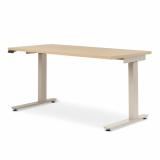
The energy sector continues to experience rapid and unpredictable change. Outside forces like government regulations and geopolitical factors, as well as new alternative energy startups and frequent mergers, acquisitions and consolidations are altering the energy landscape. These influences, coupled with impending talent shortages as many Baby Boomer knowledge workers become ready to retire, are making energy companies more focused on the importance of great environments with ample amenities to appeal to the next generation of talent.
Energy companies are vying for top talent in a highly competitive marketplace. The process puts enormous pressure on firms to build workplaces that attract and retain the best and the brightest while maintaining efficiency, supporting the well-being of their people and providing for future business needs.
At the same time, companies face a multitude of external challenges. Companies are in a constant state of evolution, striving to stay ahead of gamechanging industry dynamics. The drive for innovation, combined with new technologies, unconventional exploration methods and the impact of tougher regulations, is greater than ever.
Knoll surveyed select energy companies, organized roundtables and conducted oneon- one interviews with industry observers and experts across the country to capture what drives and influences the energy workplaces of today. Speaking with more than fifty workplace strategists, designers, end users, real estate brokers and journalists over several years, we identified characteristics and priorities of the energy workplace.
This brief is the culmination of our research and provides workplace planning and design strategies to support energy workers as they navigate complex issues in an ever-shifting environment.
Drivers, Culture + Characteristics
While highly driven by technological research and innovation, it is the history and unpredictable nature of the energy business as well as its various sub-sectors that shapes much of its culture and defines its characteristics.
Standard procedures + line of command
A traditional organizational structure and exacting, processdriven methodology typifies how many energy firms often operate. Even as companies adopt a more progressive, collaborative workplace approach, a conservative culture prevails, sustained by a workforce seeking the predictability and stability a procedure-driven work environment offers.
Rapid change, expansion & contraction
Change happens quickly and frequently in the energy sector. Cycles of drill/explore/retreat and frequent mergers, acquisitions and consolidation can beget a cycle of rapid staff expansion and just as swift contraction. “One deal quickly doubled our population,” recalled Greg Dewey, Vice President, Corporate and Human Resources, Tapstone. “We needed to have the kind of environment that could put a lot of people in one space if needed, and adapt just as quickly if assets were sold.”
Volatility
Energy companies operate under some of the world’s most complex markets and regulations. Geopolitics has the capability to exert swift and disruptive pressure on the operations and security of energy assets across the world and can be a source for both opportunity and risk. Recent global economic turmoil, financial and supplier market uncertainty and expanding competition along with tiresome price swings and exchange rate fluctuations have the potential to create vast change in the energy industry and the global economy as a whole. In response, energy workplaces have necessitated the need to be flexible and adaptable while maintaining a sense of meaning.
Sub-Sectors
The idiosyncrasies represented in the energy industry’s many sub-sectors—oil and gas, mining, utility and alternative energy—influence some distinct business objectives, driving differences in workplace design. As risk-taking explorers, upstream oil and gas workplaces tend to reflect bolder design choices versus the more pragmatic environment of midstream and downstream firms. Producers prefer more enclosure while suppliers are comfortable with open environments. Utility companies often embody a more functional aesthetic; alternative energy offices can resemble high-tech startups.
Microcultures
Energy workers often identify with subcultures expressed within the corporate environment.

Figure 1. Prevailing cultural expectations, rather than functional demands, combined with the relatively low cost of space compared to other energy investments, account for the prevalence of private, enclosed spaces for upper management in energy companies.
School
Leading oil companies have endowed select engineering-based universities for decades, providing an onramp for new graduates and engendering generations of school loyalty. This can create a more connected workplace, but can also foster competition among colleagues.
International
Global companies increasingly utilize the office environment as a change lever to create a single universal culture that everyone understands. Open plans with few hierarchical standards, embraced by many European-based companies, can make a statement about a company’s “flat” ethos and progressive sensibility.
Tenure
The longevity nurtured by many energy companies yields a workplace filled with a significant sum of employees with a shared history of surviving boom and bust cycles prevalent in the energy industry.
Age
As much of the oil and gas workforce prepares to retire (about half the workforce is eligible to retire in 2015, according to Rigzone), breakthroughs in shale drilling have spurred U.S. oil and gas production, drawing a younger generation of workers. Missing are many mid-career professionals, who due to the low oil prices and limited hiring from the mid-1980s through the mid-2000s, chose alternative industries.
In contrast, many renewable energy firms embody the youthful culture found in hightech companies. “Our workforce skews young,” noted Vanessa Benedetti, Office Services Manager of Vestas. “The majority have kids under 12, or are young and single,” added Benedetti, who recalled just one person retiring in six years at the Danishowned wind turbine manufacturer based in Portland, Oregon.
Space utilization
Compared to the expense of leasing an offshore oil rig (about $500,000 per day according to Rigzone), the relatively low cost of premium office space (under $30 a square foot in Houston) has led to a higher-thanaverage proportion of private offices in the oil and gas sector (Figure 1).
Workplace Priorities
Both the nature of the energy business and its cultural nuances create well-defined priorities for workplace planning.
1. Safety/security
Extremely risky and dangerous operations are elemental to upstream business operations, demanding equally high levels of security. Universal safety standards are instilled so deep they become part of the company-wide culture. “We’re in a risky business and the idea is that everything is taken seriously,” said Steve Dinopoulos, Enbridge, Supervisor Facilities Planning and Design.
2. Advanced technology
The technology that has propelled U.S. oil exploration is run on some of the biggest, most sophisticated systems in the world, according to Jon Fahey, Associated Press energy reporter. As the quest for new energy sources becomes increasingly complex, it demands an even greater reliance on technology and accompanying brainpower. Equally important are meeting spaces equipped with technology that facilitates reliable, clear communication from field offices and rigs around the world, as well as training, knowledge transfer and day-to-day decision-making.
3. Attraction and retention
More than 50% of oil companies have labor shortages that will be exacerbated when their senior employees retire in the next few years, giving rise to a new form of “movable talent.” Skilled retirees are frequently called back on projects where they have unique knowledge or are recruited for startups where they can hit the ground running.
“As a startup, we need to find more seasoned people who can do a variety of things,” said Tapstone’s Greg Dewey. “We don’t want the first people we hire to need on-thejob training.”
Such a highly competitive landscape has put new premiums on attracting and retaining a skilled workforce, forcing a delicate balance of managing the needs of veterans while creating a workplace that appeals to young employees and supports the workstyles of both generations.
4. Collaboration and knowledge-sharing
As Generation Y enters and rises through the workforce, they bring a comfort with collaboration, technology and information sharing. Yet they often lack soft skills as well as the highly technical knowledge required to advance in the oil and gas industry.
To buttress knowledge transfer and spur innovation, companies are implementing mentoring programs that balance hierarchy with flexibility such as leadership development rotations and cross-divisional/ generational teams that collaborate on largescale projects.
Such agendas require environments that foster communication and collaboration, spark invention and enable fast problemsolving and decision-making. Similarly, spaces need to be agile to support the fluidity of changing teams and project lifecycles.
5. Health and wellness

Figure 2. Energy companies devote about a third of all meeting spaces to groups of 8 to 12 people. Just 7% are planned for 1 to 2 people (possibly a reflection on the affinity for private offices). However, as energy workplaces shift to a more open environment, smaller refuge spaces will become a more important space option. Classrooms and training rooms and large meeting spaces are well-utilized in an industry with highly specialized jobs that often require retraining after college.
Energy companies have customarily been committed to “supporting the whole person” in the workplace.
Investing in an environment and programming dedicated to employee’s well-being pays dividends in recruitment, retention, productivity and employee satisfaction. “We have good ergonomics and a nurse on staff so we don’t lose time,” commented Steve Dinopoulos of Enbridge, noting his company of 2,500 has gone 365 days without a lost day.
6. Focus space
Design industry veterans agree that privacy and quiet are essential in energy sector environments. “Heads down” space is vital not only for engineers who need long periods of uninterrupted time, but also for the large number of energy employees who do frequent focus work and/or are involved on highly confidential projects.
Whether it’s the culture, the nature of the work or both, oil industry workers spend a large percentage of their day in their individual workspace, and have a significantly higher utilization rate (close to 80%) than that of the average American or European knowledge worker (as low as 35%) according to a GSA workplace utilization report.
7. Sustainability
Achieving LEED standards is a priority for many energy companies, who strive to run their offices in a highly responsible way. For companies in the renewable sector, sustainability is a way of life. It speaks to employees who want to be associated with a company with a mission that they can passionately get behind.
“This is not just a job, it’s part of your mentality. As a cutting-edge clean energy company, living our brand is a big deal,” explained Vesta’s Vanessa Benedetti. “It’s one way we appeal to young workers.”
Workplace Solutions and Strategies
To best serve the current and future workplace, while addressing energy sector cultural nuances and priorities, we suggest seven strategies and solutions.
1. Facilitate mentoring and knowledge transfer

Figure 3. A mix of individual and group spaces that vary in size and setting support the knowledge transfer and focus work energy workers engage in daily. Offering a selection of indoor and outdoor, formal and informal spaces equipped to support varied tasks and activities provides options to suit multiple generations.
With the imminent exodus of large numbers of highly experienced professionals with specialized knowledge, energy companies must encourage the informal collaboration that facilitates and supports knowledge transfer to supplement more formalized coaching and training (Figure 2).
“Most of the training doesn’t stop at the threshold of the classroom,” notes one veteran designer. “There’s just as much learning going on outside as inside, especially relative to ‘soft’ issues of culture.”
“We created dedicated areas with soft seating throughout our space—off elevators, in the coffee/lunch room, outside larger meeting rooms,” said Steve Dinopoulos, Enbridge. “There’s a ‘hub’ in each destination where people can bump into each other and congregate, and then go back to their desks.”
“At the end of the day, the real magic is that they organically learn from each other,” said John Haba, Senior Associate at Gensler’s Houston Office.
Planning Strategies
-
Visual transparency via glass-front offices and activity spaces to imply approachability and increase opportunities for interaction
-
Open office workstations with low panel barriers to reduce overall horizon and increase visual access within the space, topped with frameless glass if added privacy is needed
-
Centralized café and pantry with mix of tables and chairs, equipped with power, data and display to function as a destination space and informal meeting area
-
Enclosed enclave spaces for one-on-one mentoring
2. Provide choice in workspaces

Figure 4. While some energy companies today are moving to fewer work setting options that are uniformly smaller in size, we found office size and style still reflect distinct tiers among many energy companies.
In an industry where daily work can be complex and unpredictable, the environment must be highly adaptable. Physical space must respond to individual and social needs, appeal to all generations and support retention efforts (Figure 3).
In particular, spaces should be designed with recent graduates or even current college students in mind. “Younger people are coming in and their needs and wants are different than those who have been here for a generation,” remarked Steve Brady, Manager of Facilities at Williams.
“The younger workers coming in like being able to collaborate and work closely with their peers,” Brady explained. “They’re doing lots of teleconferencing and teaming and less single decision making.”
Planning Strategies
-
A variety of conveniently located workspace types from which to choose that allow people to more effectively shape their work experience, including:
-
Private spaces for focus work: individual workspaces, enclave and refuge spaces
-
Varied sizes and types of team meeting and assembly spaces for collaborative work: lounge areas, enclosed conference rooms, project rooms
-
A selection of community spaces for informal gatherings: break rooms, cafés and outdoor environments
-
Support for mobility and remote working with BYOD (Bring Your Own Device) policies, headsets, sustained with easy plug-ins and available power and data sources
-
Allowance for personalization through primary workspaces with sit-to-stand desks, personal accessories and enough worksurface to lay out materials
3. Re-size & standardize While the expense ratios of the energy world provide generous latitude in real estate planning, economics, efficiency and expediency also drive planning decisions (Figure 4).
“When companies grow organically, we often find space is not done efficiently,” explained a designer. Similar challenges result from consolidation or the expansion and contraction cycle.
While private offices still play a vital role in many energy workplaces, standardizing proportions can simplify and expedite reconfigurations. Optimizing space utilization by reducing footprints of offices and workstations can create greater efficiencies and lower operating and energy costs while sending a message of smart spending and a more egalitarian approach.
The pull back on individual space has given way to a wider size and mix of collaborative rooms with opportunities for employees to work, think, create and engage with colleagues.
Planning Strategies
-
Size and design standards for offices and open plan workstations that can be easily planned into home office, field office and foreign locations
-
A “kit of parts” approach with adaptive furniture to allow for ultimate flexibility, i.e. components that work in an open plan for individual or common areas and also create an easy transition from a single to a double occupant office
-
Designated zones within the workspace to support transitions between individual work, informal interactions and group work
4. Support the whole person
Salaries and benefits are historically generous in the oil industry, and with unemployment low and competition for talent high, workplace amenities are often the deciding factor for new recruits (Figure 5).
Intangibles such as an atmosphere where people want to come to work and a focus on supporting the whole person are amenities that benefit both company and employee. On-site laundry and cafés with healthy takeout options simplify a working parent’s life, while health, wellness and medical facilities reduce healthcare costs, sick days and injury claims.
“It’s about satisfaction at work,” an industry insider notes. “If we build this campus that supports the whole person and takes care of their creature comforts, the person will be less distracted and more productive.”
Since the healthcare dollar is a large piece that any large organization must manage, companies have a tremendous incentive to foster as much healthy behavior in their people equation. Additionally, it sends a message “that my company cares about me,” a priceless investment in building loyalty.
Planning Strategies
-
Design for abundant natural light throughout the office environment
-
Ergonomic tools such as adjustable monitor arms, keyboard trays and LED task lighting to reduce muscle and eye strain
-
Seating and height adjustable tables that promote a full range of movement
-
Encourage movement and activity through:
-
Open staircases
-
Fewer but larger pantry and break areas
-
Centralized printing, copy and storage areas
5. Design for maximum flexibility
Whether it results from consolidation, spin-off, startup, acquisition or other events, expansion and contraction in the energy industry happens frequently and quickly, and the workplace must respond just as swiftly.
“It’s important to have highly flexible, agile products in the workplace that can be changed overnight to the new business of the next day,” a user notes.
Planning Strategies
-
Open-style planning provides maximum flexibility when the number of employees, the uses and layout are unknown or subject to change
-
Adaptable work tools that aid in future-proofing: power poles that provide a structure for technology, storage and space definition, service walls and power cubes
-
Freestanding storage elements to define zones between departments or work groups that are reconfigured as the needs of the organization evolve
-
Training rooms of varied sizes with highly adaptable elements such as freestanding, lightweight, multi-sized tables on wheels, stackable chairs and moveable white boards and monitors
6. Prioritize safety, security and privacy

Figure 5. Many organizations are striving to use their workplaces as tools to attract and retain the right employees by providing a full range of workplace amenities.
Safety and quality are often top of mind when planning the built environment, according to George Farish, Senior Associate at Trammel Crow. Safety concerns bore down to the micro level, underscoring the need for streamlined environments with no visible extraneous elements.
“Containing cords and cables in the wall, the floor or furniture creates a safer environment and avoids a tripping hazard,” added Farish. Confidentiality concerns also require vigilance and privacy while technology presents ongoing security concerns.
Planning Strategies
-
Meeting tables, power poles and service walls that support power and data to contain cables
-
Minimal furniture adjustments to simplify the job of the user and reduce the possibility of error
-
Privacy screens and/or dedicated work spaces for project teams working on confidential business
-
Private offices with floor-to-ceiling enclosures for those whose work requires high levels of confidentiality and/or continued concentration
7. Lead from the top
Organizational and staff concerns are the top barriers to implementing alternative work strategies, according to our research (Figure 6). To assure a successful organizational change, direction must come from the top. C-suite executives must embrace and encourage new workplace approaches, speak with one voice and model the desired behaviors relative to the new space. Additionally, they should be ready to provide strength, support and direction to employees to assuage the inherently unsettling nature of change.
“Organizational challenges need to be addressed at the human level, not simply fixed with a physical solution,” designers agree. If the cultural shift is not at C-level, no matter how well-designed the space, change won’t happen. “The really successful organizations understand that and apply the process-driven methodology they use on a daily basis,” designers note.
Planning Strategies
-
Designate a high level leader in the organization to champion the new space and lead by example
-
Train workers how to use the new space and the furnishings and elements within it
-
Communicate regularly with employees about the transition
-
Highlight new features such as cafés, fitness center, lounge seating and collaboration areas to offset reductions in size or privacy from previous environment

Figure 6. Organizational and staff concerns are the top barriers to implementing alternative work strategies.
Future Outlook
As world class innovation and new technologies take root, and alternative energy sources take on greater influence, a younger demographic of workers arrives in the C-suite and a broader range of geographies make their way into the energy sector. The combination of factors will reshape workplace culture and drive new trends in workspace design.
To stay ahead of the curve and succeed in the talent war, energy organizations must provide environments that support knowledge sharing and maximize flexibility, while continuing to support the needs of their skilled workforce.
Amidst continually evolving technology, the factors that define and challenge the energy business—risk, regulation, international influence, price volatility—will remain essentially the same. At the end of the day, the human factor is the ultimate competitive advantage that will propel energy companies to the next level of success and assure their long-term viability.
Glossary
ALTERNATIVE FUELS Used primarily for transportation. Includes biodiesel, ethanol, hydrogen, electric, natural gas and propane.
BABY BOOMERS The generation born post World War II, from approximately 1946 through 1964.
DOWNSTREAM One of three segments in the oil and gas industry. Downstream handles refining of crude oil, processing of natural gas, and the retail marketing and distribution of products derived from those sources such as gasoline, kerosene, diesel oil, heating and oil, lubricants, waxes and asphalt. Its primary science is chemical engineering.
GENERATION X The cohort of people born between the mid-1960s and the early 1980s.
GENERATION Y (also known as Millennials or Echo Boomers). The generation born between about 1980 and the mid-1990s.
GREAT CREW CHANGE Refers to the energy workforce comprised of Baby Boomers soon to retire (more than 70% of the U.S. oil and gas industry is 50 or older, and industry experts estimate that about half of all engineering and geosciences professionals will be eligible for retirement in the coming years); the absence of Generation X workers (college graduates in the early 1980s to early 2000 pursued careers outside the oil industry which had crashed and hiring stopped); and the influx of Generation Y workers.
MIDSTREAM One of three segments in the oil and gas industry. Midstream is the distribution end, and includes processing, storing, transporting (via pipeline, rail, barge, oil tanker or truck) and wholesale marketing of oil and natural gas. As a transporter, it is less sensitive to price fluctuations of the raw material and is a relatively stable business.
RENEWABLE ENERGY Renewable energy, often referred to as clean energy, is energy that is naturally regenerated over a short time scale and comes from natural resources, such as sunlight, wind, moving water and geothermal heat.
UPSTREAM One of three segments in the oil and gas industry. Upstream is the exploration and production segment, searching for crude oil or natural gas fields, drilling and operating the wells that extract the resources. Upstream’s primary science is geology.
Special Thanks
A special thanks to the following individuals as well as others who preferred to remain anonymous.
Cliff Aron
Principal, Greenmax Capital Advisors
Brooklyn, NY
Vanessa Benedetti, MBA
Office Services Manager
Vestas American Wind Technology, Inc.
Portland, OR
Steve Brady
Manager of Facilities, Williams
Tulsa, OK
Greg Dewey
VP Corporate and Human Resources
Tapstone
Oklahoma City, OK
Steve Dinopoulos
Supervisor Facilities Planning and Design
Toronto, Canada
Jonathan Fahey
Reporter, Associated Press
New York, NY
George Farish, LEED AP BD+C
Senior Associate, Trammel Crow
Houston, TX
Cindy Green
Counsel/Compliance Director, Tapstone Energy
Oklahoma City, OK
John Haba
Senior Associate, Gensler
Houston, TX
Tim Heskett
Director of Office Services, SandRidge Energy, Inc.
Oklahoma City, OK
Rob Neblett
Principal, Office Leasing, Tenant Representative
Avison Young
Houston, TX
Catherine Nemser
Principal, Greenbacker Capital
New York, NY
Saquib Rahim
Reporter, EnergyWire, Greenwire
New York, NY
Shawn Rumery
Research Manager, Solar Energy Industries Association
Washington, DC
Beth Goff-McMillan
CEO, WorkspaceVision
Dallas, TX
References & Additional Reading
Agee-Aldridge, Jenny. 2014. “Inside BP’s fancy campus,” Houston Business Journal, May 15.
http://www.bizjournals.com/houston/blog/breaking-ground/2014/05/inside-bp-s-fancycampus.html?page=all.
Aguire, DeAnne and Micah Alpern. 2014. “10 Principles of Leading Change Management,” Strategy+ Business, June 6
http://www.strategy-business.com/article/00255?pg=all.
Anderson, John T. 2011 “Corporate Real Estate: How Efficiently Do You Use Your Space?” Facility Management Journal, March/April.
http://fmlink.com/a/41319.
Arnsdorf, Isaac. 2014. “Crew Change: Millennials Hit the Oil Patch,” Bloomberg Businessweek, May 22.
http://www.bloomberg.com/bw/articles/2014-05-22/millennials-look-to-cash-in-onshale-energy-boom.
Caplan, Anna. 2015. “Broad-Based Decline ‘Overblown,” Says Report,” GlobeSt.com, March 10.
http://www.globest.com/news/12_1062/houston/office/Broad-Based-Decline-Overblown-Says-Report-356007-1.html.
Caplan, Anna. 2015. “Houston Success Hinges on Oil,” Globe St.com, March 3.
http://www.globest.com/news/12_1045/houston/office/Houstons-2015-Success-Hinges-on-Oil-355268-1.html.
Childs, William. 2011. “Energy Policy and the Long Transition in America.” Origins: Current Events in Historical Perspective, Ohio State University, Department of History, Vol. 5, Issue 2, November.
Origins.osu.edu/.
Citrix. 2012. “Workplace of the Future: a global market research report.” White Paper.
http://www.citrix.com/content/dam/citrix/en_us/documents/products-solutions/workplace-of-thefuture-a-global-market-research-report.pdf.
Gillen, Nicola and Hilary Jeffery. 2014. “Happiness = loyalty + productivity,” See Further. The Next Generation Occupier Issue AECOM 01:18-19.
http://www.aecom.com/deployedfiles/Internet/News/Innovation/See%20further_occupier_140207_Final_LR.pdf.
GSA Workplace Utilization and Allocation Benchmark. 2012. GSA Office of Governmentwide Policy, Office of Real Property Management Performance Measurement Division, July.
http://www.gsa.gov/graphics/ogp/Workspace_Utilization_Banchmark_July_2012.pdf.
History.com Staff. 2010. “Oil Industry” History.com. A+E Networks.
http://www.history.com/topics/oil-industry.
JLL Research. 2014 “Energy Outlook. North America 2014.”
http://www.us.jll.com/united-states/en-us/research/4771/North-America-Energy-Outlook-2014-JLL.
JLL Research. 2013. “3 best practices that will help energy companies save big.” Perspectives on energy. September.
http://www.us.jll.com/united-states/en-us/Research/3-practices-helpenergy-companies-save-big.pdf?513bf0c3-0600-4c0b-ab56-94bd2f0d0237.
Kelly Vertino, Sheila. 2014. “The Next Generation of Corporate Offices.” Development Magazine. NAIOP. Commercial Real Estate Development Association, Spring.
http://www.naiop.org/en/Magazine/2014/Spring-2014/Development-Ownership/The-Next-Generation-of-Corporate-Offices.aspx?p=1.
Knoll Workplace Research. 2012. “Activity Spaces. “A variety of spaces for a variety of work.” Knoll.
Knoll Workplace Research. 2013. “Creating Collaborative Spaces that Work. A Performance based Approach to Successful Planning.” Knoll.
Liggett, Dan. 2014 “Addressing expected shortage in renewable industries’ workforce.” Renewable Energy World, August 2.
http://www.renewableenergyworld.com/rea/companies/geoamps-llc/news/print/article/2014/08/addressing-expected-shortage-in-renewableindustries-workforce.
O’Neill, M.J. 2012. “Adaptable by Design. Shaping the Work Experience. Knoll Workplace Research.
ProCon. 2013. “Historical Timeline. History of Alternative Energy and Fossil Fuels.” Last modified June 13.
http://alternativeenergy.procon.org/view.timeline.php?timelineID=000015.
Rigzone. 2015. “Offshore Rig Day Rates.” Last updated April 7.
http://www.rigzone.com/data/dayrates/.
Seeley, Rachael. 2014. “The Big Crew change is here.” Oil & Gas Journal. October 27.
http://www.ogj.com/articles/print/volume-112/issue-10c/regular-features/journally-speaking/the-bigcrew-change-is-here.html.
Union of Concerned Scientists. “A Short History of Energy.”
http://www.ucsusa.org/clean_energy/our-energy-choices/a-short-history-of-energy.html#.VMEsYUfF-Sq.
Wymer, Tracy D. 2010. “The Changing Private Office.” Knoll Workplace Research.
Download "Powered Up" to Read the Full Paper






























